This post may contain affiliate links. Please read our disclosure policy.
These easy dinner rolls are soft and fluffy, and slightly buttery. With these step by step instructions, making perfect dinner rolls will be so easy you’ll want them every night!
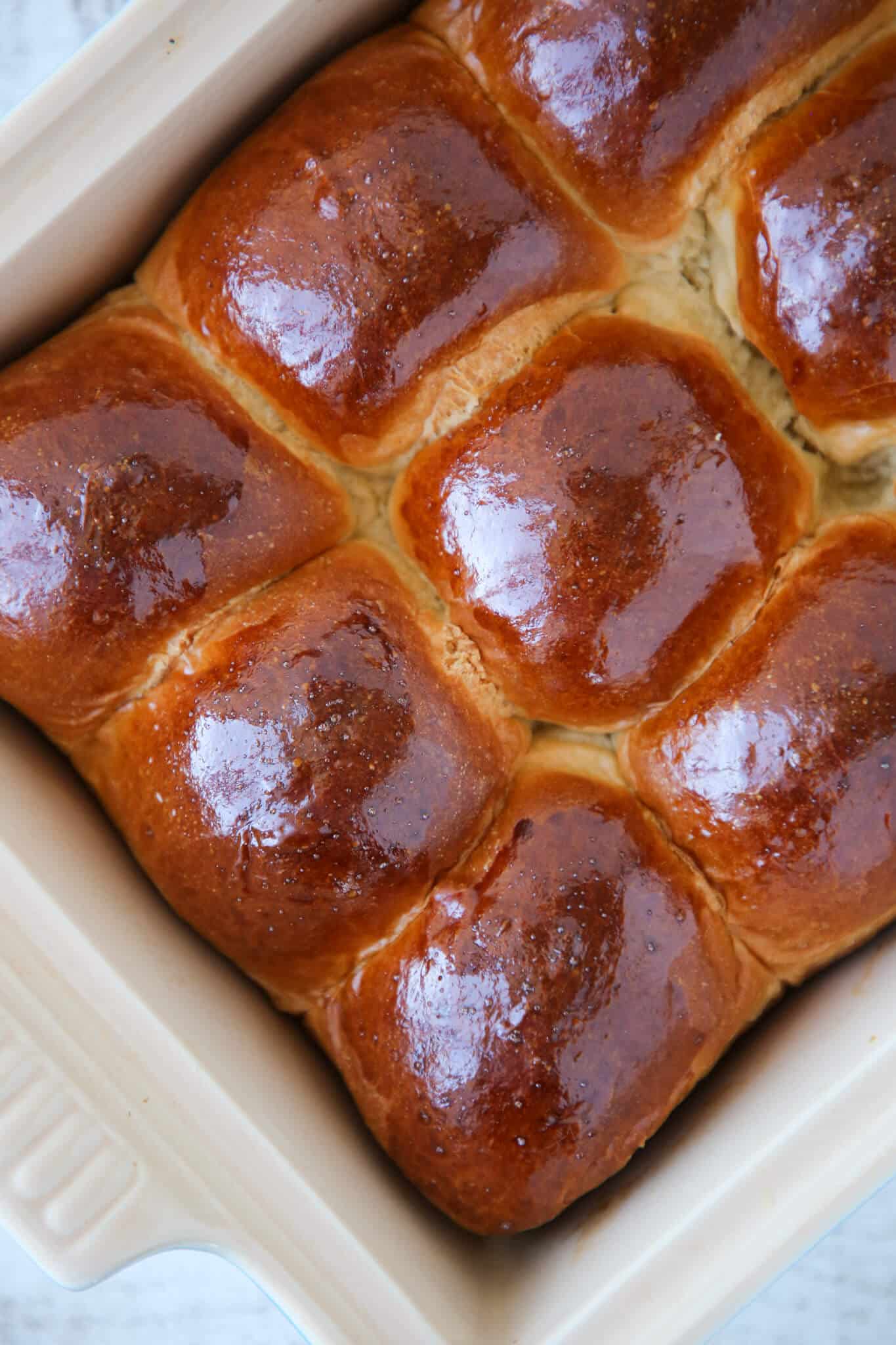
These easy rolls are based on my foolproof potato dinner rolls recipe. The forgiving dough bakes into a tender, fluffy roll. You can have from scratch, restaurant quality rolls in under 2 hours!
Eat some fresh out of the oven (that is the baker’s reward) then serve the rest with a bowl of butternut squash chili, ricotta meatballs, brown sugar glazed meatloaf, or even these easy mustard pork chops.
Table of Contents
Ingredients for Dinner Rolls
- All Purpose Flour: I prefer to use all-purpose flour in the majority of my bread recipes! It has the perfect amount of gluten for developing a strong network but remaining tender and soft. The exception is when I want a chewy texture like with bagels.
- Water & Milk: I use a combination of water and milk for hydration in this recipe. I do this because I want a bit of the fat and flavor from the milk. However, not too much flavor that it takes all the glory from the butter.
- Kosher Salt: Kosher salt is lass salty than table salt and a teaspoon weighs less than other finer ground varieties.
- Dry Active Yeast: These little dry active yeast guys require the added step of hydration, but they are fast yet controllable. Though they take more time than instant yeast, they produce superior rolls just like in my brioche buns. See substitutions for more options.
- Sugar: There is a little bit of sugar here for flavor, caramelization of the crust and also to give the yeast an easy, readily accessible food supply to get the party started!
- Butter: Unsalted butter allows you to control the flavor of the dough while still adding all the buttery goodness! There is just enough to make the rolls tender while keeping them on the healthy-ish side of decadent.
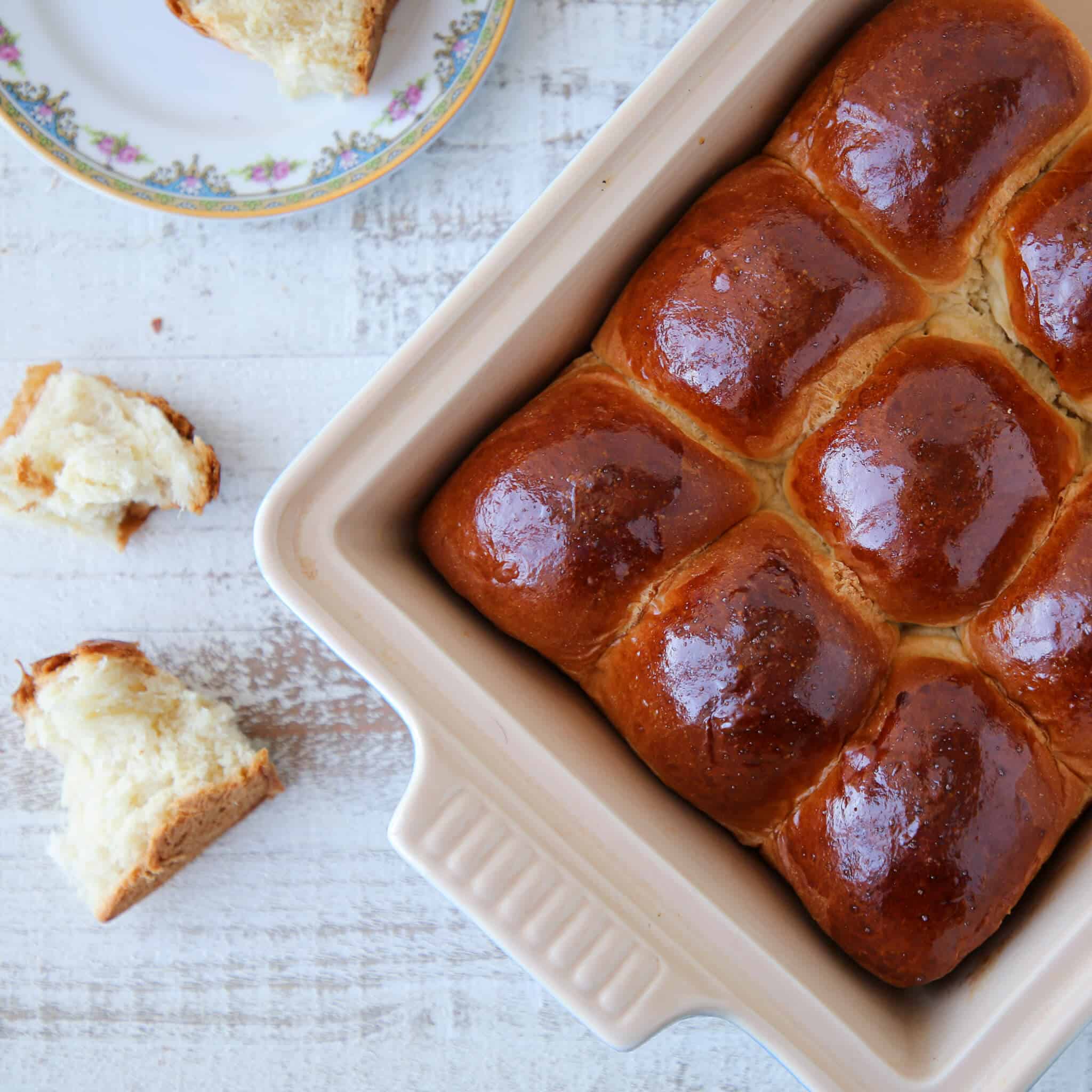
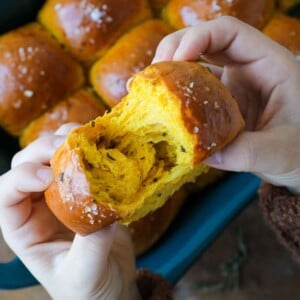
Possible Substitutions for Dinner Rolls
- Whole Milk: I prefer baking with whole milk for the flavor and fat, but you could use skim milk, alternative milks or even make this recipe using all water.
- All-purpose flour: If you only have bread flour, you can certainly use that instead, but it will take less time to develop the gluten and your final product will be a bit chewier than tender.
- Yeast: If you don’t have dry active yeast, you can substitute double the weight of fresh yeast or half the weight in instant yeast. If using either fresh or instant yeast, you can add them straight to the batter, but mixing them into the sponge will still kickstart the fermentation and gluten development!
Why Use a Sponge in Dinner Rolls?
A sponge is a bread-making technique where a portion of the flour is combined with the yeast and all of the liquids. In this recipe that is milk and water. The sponge not only activates and gives the yeast time to start fermenting, but also allows the gluten network to begin forming. This decreases the total amount of time you have to mix or knead the bread and will make the whole process faster!
Variations on Standard Dinner Rolls
- Loaves: Divide and shape this same recipe into two loaves. Follow my brioche bread recipe for dividing, shaping and baking.
- Raisin Bread: You know how I feel about raisin bread! You can add up to a pound (454g) of raisins to the recipe below.
- Nut & Fruit Bread: Add any combination of dried fruit or nuts you wish up until one pound.
- Citrus: Bring subtle notes of citrus by adding lemon or orange zest to the batter and substitute the water with orange or another flavor of juice!
- Spices: Add up to a tablespoon of spice without changing the recipe.
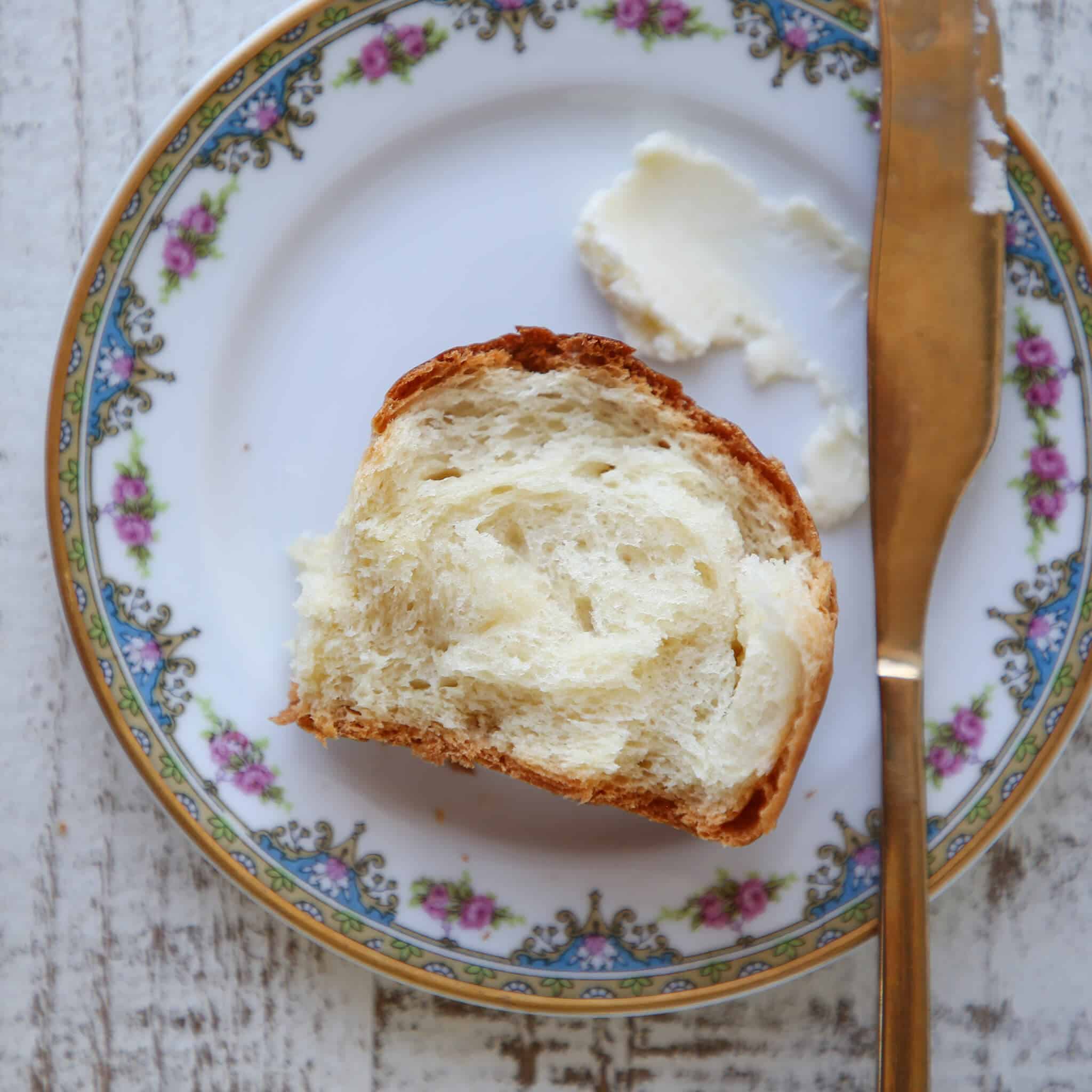
How to Store Rolls
For optimal freshness, consume or freeze within two days.
In the odd event that you have leftovers, left over rolls are also phenomenal in bread pudding! Make it Pumpkin Spice Bread Pudding for the Fall or Lemon Raspberry Bread Pudding in the Summer!
What to serve with these easy dinner rolls
Stack them high with leftovers from a traditional Thanksgiving dinner, dip in in rosemary lamb stew or easy beef stew, make pulled slow cooker barbecue chicken sliders, slather them with butter and quick strawberry jam.
These rolls are so versatile that they go with anything. Except pizza. That is just one carb too many even for me!
Pastry Chef Tip
When it comes to baking, I’m a stickler for weighing my ingredients (this is my favorite kitchen scale). Conveniently, since this bread is made with a sponge, I usually scale the remaining ingredients while the sponge is sitting. Efficient use of time for the win.
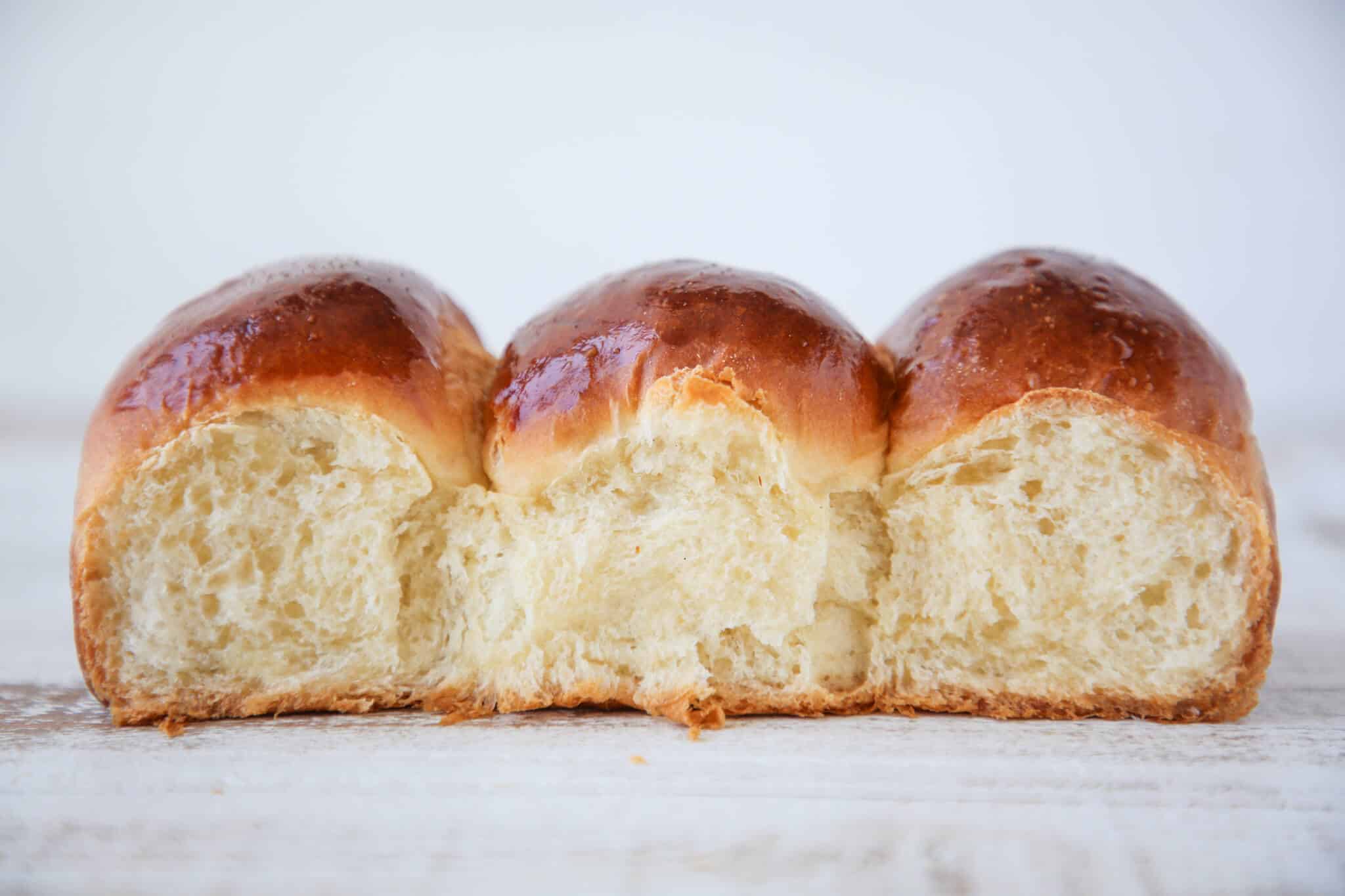
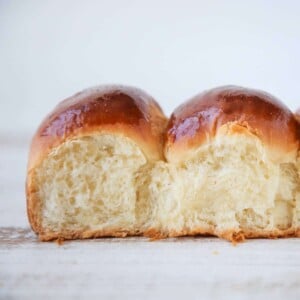
Easy Dinner Rolls
Ingredients
Sponge:
- 2 ¼ teaspoons Dry Active Yeast
- 226 g Whole milk 100°F
- 60 g Water 100°F
- 1 tablespoon Sugar
- 154 g All Purpose Flour
Final Dough:
- 383 g All Purpose Flour
- 65 g Sugar
- 1 teaspoon Kosher Salt
- 94 g Butter softened
- 1 Egg
Total Dough:
- 2 ¼ teaspoons Dry Active Yeast
- 226 g Whole milk 100°F
- 60 g Water 100°F
- 79 g Sugar
- 537 g All Purpose Flour
- 1 teaspoons Kosher Salt
- 94 g Butter softened
- 1 Egg
Instructions
Make the Sponge:
- Heat the milk and water to around 95-100°F in a pot or the microwave.
- In a medium bowl combine all the ingredients for the sponge and mix with your hands. You can mix with a spoon but it is so wet that it will be more difficult.
- Cover with plastic wrap and set in a warm spot until visibly bubbly. It should take about 20 minutes.
Mix the Dough:
- I usually scale the remaining ingredients while the sponge is sitting. (Scale is just a fancy chef word for "weigh".)
- In the bowl of a stand mixer add the flour, remaining sugar, salt, butter, egg and sponge.
- Mix on low speed with the paddle attachment until combined.
- Switch to the dough hook attachment and mix on medium speed until a rough window pane can be pulled. A 'window pane' means the dough will not look perfectly smooth but will have pulled together and made one cohesive dough around the hook. Pinch off a piece and gently pull the sides apart, rotate and pull again, making a square shape. The dough should not tear; you should be able to see through some of the dough like a window pane but then there will be pieces of dough that look rough. This is what you want.
- Scrape the dough into a well-oiled bowl, cover with plastic wrap and allow to proof for 30 minutes in a warm place. Fold the dough by grabbing one side, pull it upwards out of the bowl and then fold it over ⅓ of the dough. Rotate the bowl 180 degrees and repeat with the opposite side. Rotate a quarter turn and repeat the same folding technique. Rotate the bowl 180 degrees and make the final fold. You should have a nice tight square packet of dough.
- Marvel at your skills. Cover with plastic wrap and allow to double. Mine took about an additional 30 minutes.
- While the dough is finishing its bulk proof, grease a 9 x 13 inch baking dish with cooking spray or butter.
- When the dough has doubled and feels light and airy when touched, turn it out onto an un-floured surface. It is soft, supple and not sticky!
- Divide into 12 equal portions. You can eyeball this or weigh them. They should be about 87g each. Place each about equidistant apart in the prepared dish.
- Cover with plastic wrap and place back in the warm spot to double. This took about 30 minutes for mine.
- Preheat the oven to 350°F.
- When the buns are ready to bake (doubled and light and airy), brush with beaten egg.
- Bake in preheated oven for 20-22 minutes or until an instant read thermometer reads 185°F when inserted into the center of one of the middle buns. If you don’t have a thermometer, you can insert a cake tester or toothpick into the center and it should come out with clinging crumbs but no streaks of dough!
- Brush the hot buns with melted butter to emulate my shiny, enticing tops!
- Technically they should cool, but who has the patience? I say dig right on in.
Video
Notes
- If you want perfectly portioned buns, use a kitchen scale! They should be about 87 grams each.
- To get the nice, shiny finish, be sure to brush with a beaten egg before baking and with melted butter after baking!
- You could also shape these rolls into loaves. Follow my brioche bread recipe for dividing, shaping and baking.
- I like to mix the sponge with my hands instead of with a spoon.
- A “window pane” test is when the dough does not look perfectly smooth but pulled together and made one cohesive dough around the hook. Pinch off a piece and gently pull the sides apart, rotate and pull again, making a square shape. The dough should not tear; you should be able to see through some of the dough like a window pane but then there will be pieces of dough that look rough. This is what you want.
- You can use an instant read thermometer to be sure the buns are done baking. You’ll know it’s when it reads 185°F when inserted into the center of one of the middle buns.
- Take note of the darkness of your pan, dark metal sheet pans tend to cook faster while lighter sheet pans reflect the heat. Glass pans retain heat for longer, so they are more likely to cook the outside of the dinner roll before the interior, so just be careful with the temperature.
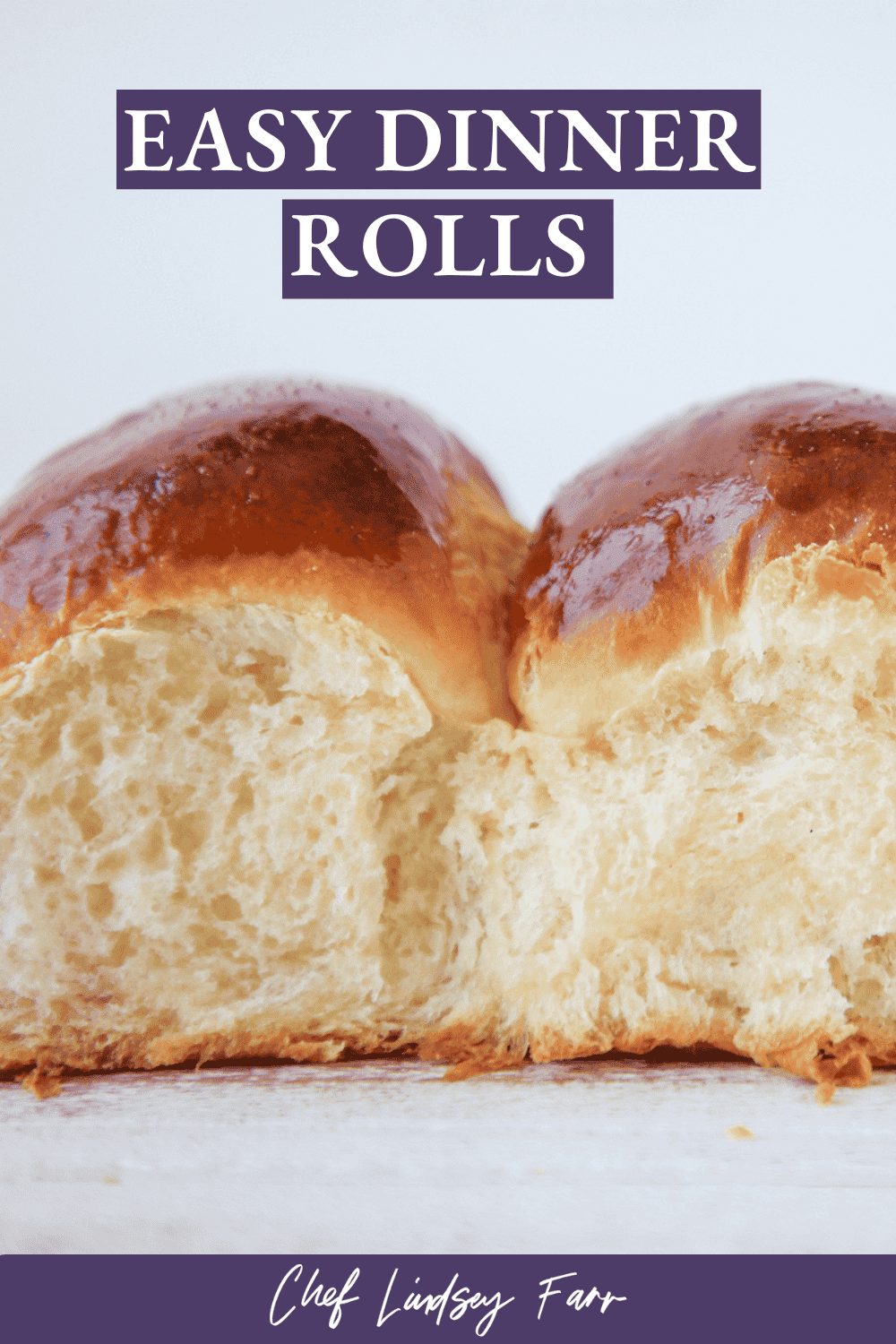
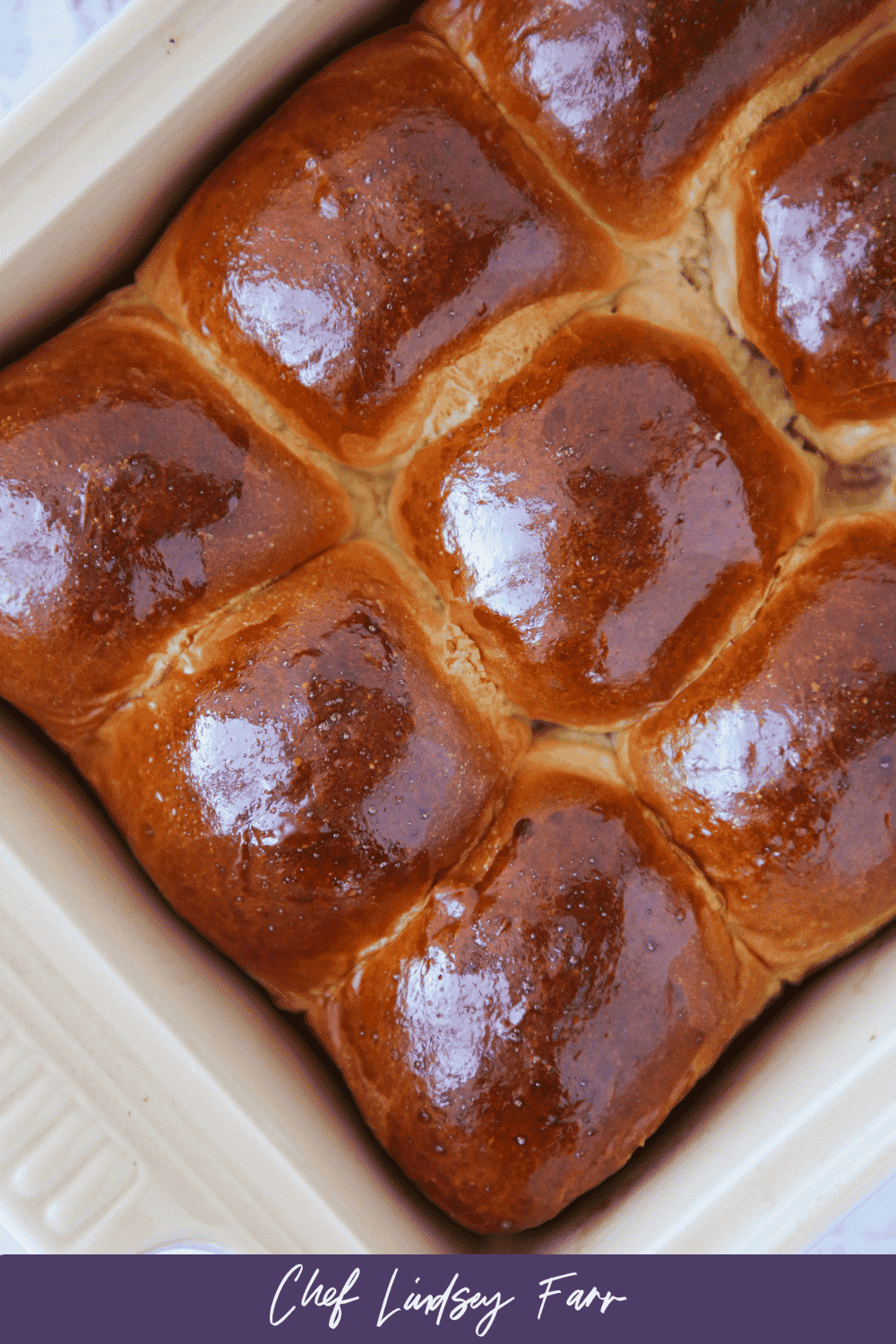
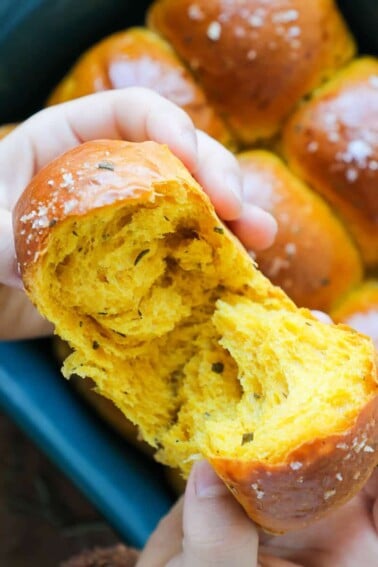

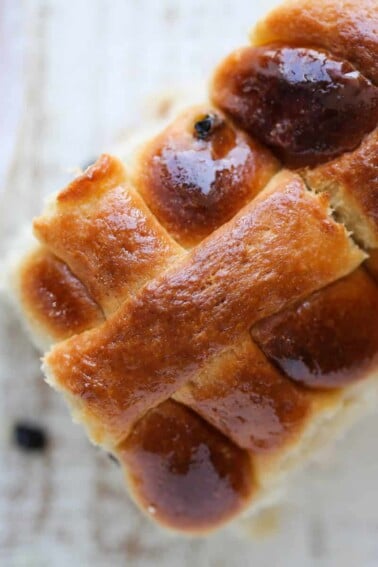
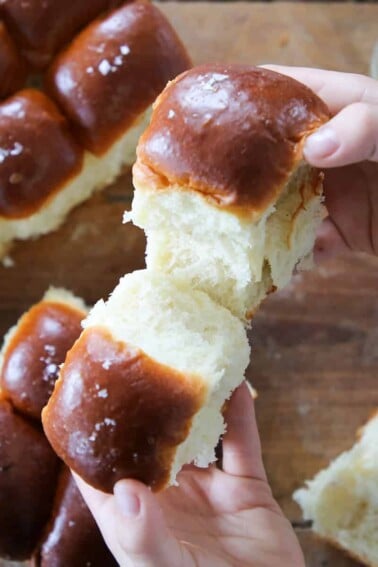








Hi Lindsey … can these rolls be made with vegan butter and almond milk? Thank you !!
Hi Marie! I prefer baking with whole milk for the flavor and fat, but you could use skim milk, alternative milks or even make this recipe using all water. I haven’t tried to make them with vegan butter yet, but they should turn out delicious. Please report back your findings for future bakers! 🙂 Happy baking!